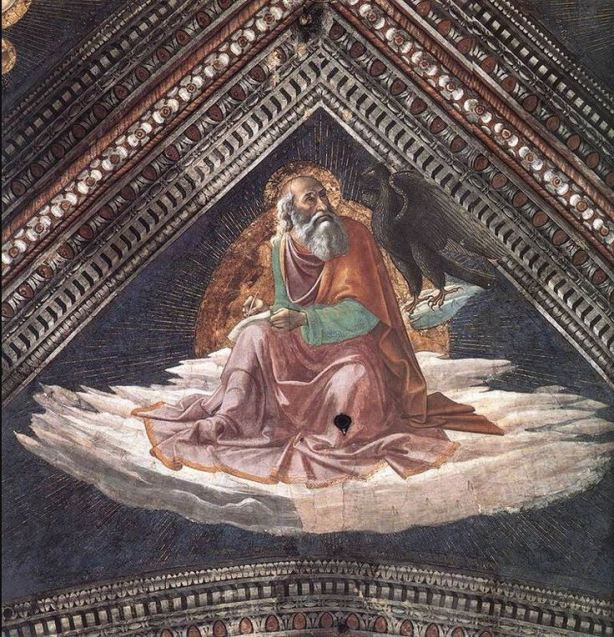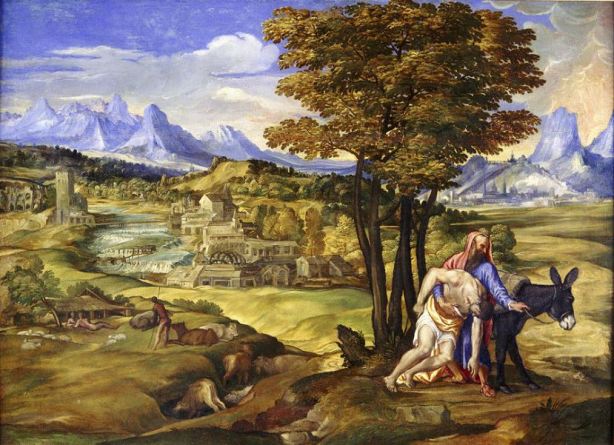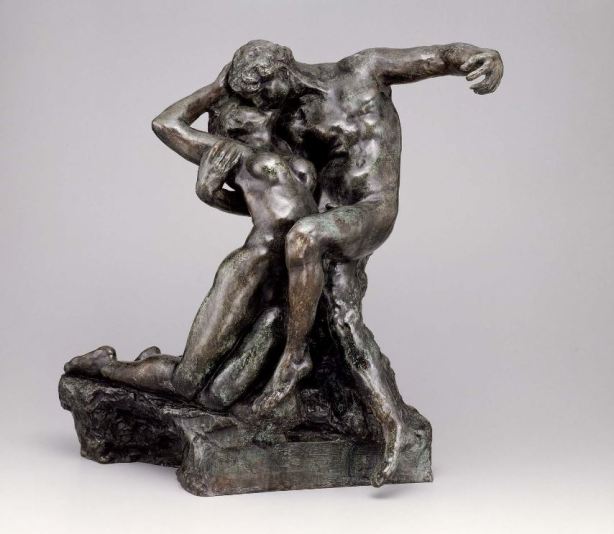by James C. Stephens
May 9, 1976

Visit to Los Angeles County Museum of Art. Many pieces about the Christian faith. Giovanni Antonio Da Pordenone’s “The Conversion of Saint Paul (1484-1539). Pietro da Cortona (1596-1669) The Vision of Saint John the Evangelist. Revelation of Saint John .
Jean Baptiste Greuze-Filial Piety. “The didactic message that Diderot hailed in the Paralytic or The Fruits of a Good Upbringing (exhibited at the Salon of 1763) forces the personages to assume expressive theatrical poses, but does not strip their faces of the superficial sentimentality typical of the Rococo. With this “high-moral coquetry,” Greuze undoubtedly paved the way for the academic painting of the nineteenth century.”
Conversion of St. Paul, early 1530s
Jacob Blessing the Sons of Joseph shows a scene from the Old Testament book of Genesis, Chapter 48.[3] In this scene, Joseph brings his two sons (Manasseh and Ephraim) to his dying father Jacob so that they can receive the family blessing. According to tradition, the eldest son is blessed with the patriarch’s right hand.[4] However, Jacob deliberately crossed his arms and put his right hand on Ephraim’s (the younger son’s) head and his left hand on Manasseh’s (the oldest son’s) head. Joseph was displeased and thought that his father was making a mistake. When Joseph tried to correct his father, Jacob refused and told Joseph that he was purposefully blessing the younger son.
Jacob Blessing the Sons of Joseph is a 1656 oil painting by Dutch artist Rembrandt van Rijn.
Domenico Campagnola. “The Good Samaritan” ( I’m not sure if this particular Campagnola painting is on display at LACMA).

August Rodin. “Eternal Springtime.”

“Rodin modeled Eternal Springtime while planning his monumental project The Gates of Hell, the bronze doors inspired by Dante’s Inferno that were commissioned in 1880 for a planned museum of decorative arts. The Gates of Hell were never finished; the original plaster version is now in the Musée d’Orsay, Paris.”
Le Penseur (The Thinker) is located above the door panels. One interpretation suggests that it might represent Dante looking down to the characters in the Inferno. Another interpretation is that the Thinker is Rodin himself meditating about his composition. Les trois Ombres (The Three Shades) stand atop the Gate. The group was initially conceived of as an indepedent figure around 1880 and cast as a composition of three identical figures juxtaposed at slightly different angles by 1904. Rodin’s peers believed The Three Shades signified Dante’s warning, “Abandon every hope, ye who enters here,” which is taken from the inscription above the Gates of Hell in Inferno.” (Wally Gobetz).
